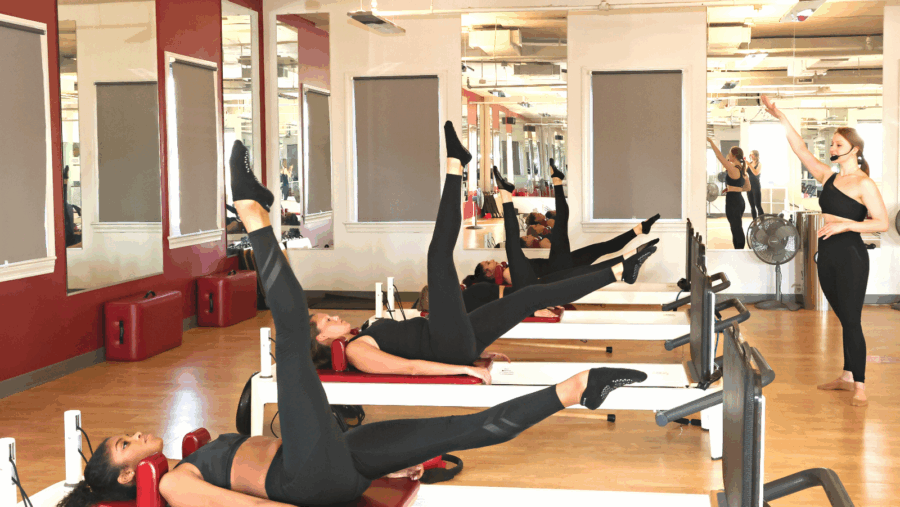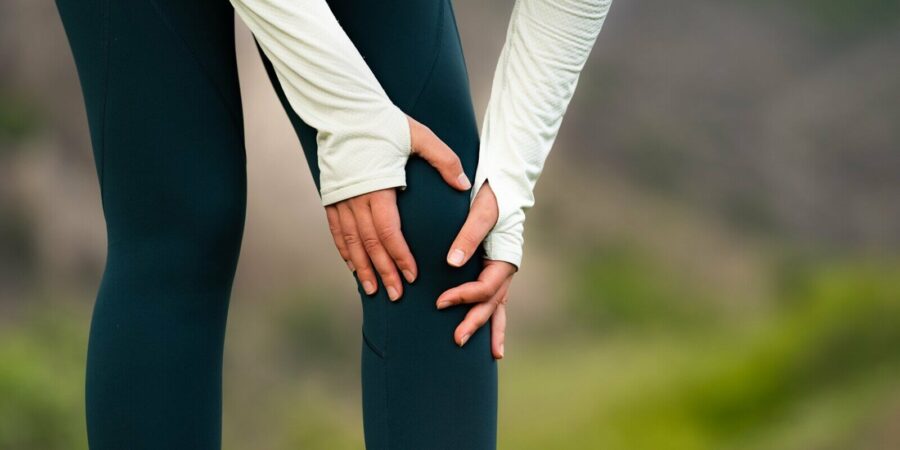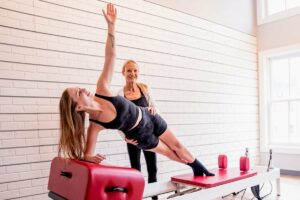 Pilates is a great workout for anyone, whether they are beginners or seasoned veterans. When you’re just getting started, it is important to focus on proper form and really dial in on a few essential exercises to build momentum. Pilates for beginners often focuses on simple but effective workouts that allow participants to develop an awareness of their body and form before moving on to more complex exercises.
Pilates is a great workout for anyone, whether they are beginners or seasoned veterans. When you’re just getting started, it is important to focus on proper form and really dial in on a few essential exercises to build momentum. Pilates for beginners often focuses on simple but effective workouts that allow participants to develop an awareness of their body and form before moving on to more complex exercises.
This means that beginners will likely see similar exercise routines to get them started, no matter where they learn to practice Reformer Pilates.
Here are five of the most fundamental movements for beginners to get them used to the challenges of Pilates, the way the reformer works, and how to orient their bodies to find success with this gentle form of exercise.
1. Footwork
Using the reformer to stretch out fully stimulates muscles across the entire body. Footwork takes full advantage of this by allowing participants to lie down entirely, head on the headrest, and feet up on the foot bar. Then, push slowly away from the foot bar until the legs are fully extended before slowly returning to the starting position by bending the knees.
This exercise is great for beginners because it opens up the hips and increases flexibility around the spine. Because this area is essential for stability and balance in other exercises, starting here can equip participants with the skills and coordination they need to expand their movements as they learn more.
2. Kneeling Arm Extensions
Participants kneel on the reformer for this movement and brace themselves by holding onto the headrest. Then, they grab the handle of one of the pulleys and draw it directly back to their side toward the hip, keeping it parallel with the reformer the entire time. Repeating this movement, with the hand facing up or down, targets the arms and shoulders.
Kneeling arm extensions rely on developing strength through pulling rather than pushing motions (think of the difference between the muscles used in tug-of-war versus a bench press). This stimulates movement that is gentler on the joints and provides strength that is more adaptable for the many types of activity that an individual may need throughout the day.
3. Side Sit-Ups
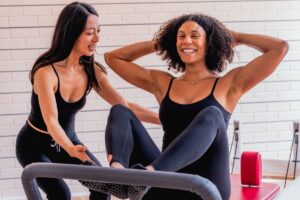 This exercise takes advantage of the box so participants can sit on it sideways. By hooking one foot underneath the strap, participants are stabilized enough to place their hands behind their heads. Then, simply lower the body toward the wall, lift back up, and repeat.
This exercise takes advantage of the box so participants can sit on it sideways. By hooking one foot underneath the strap, participants are stabilized enough to place their hands behind their heads. Then, simply lower the body toward the wall, lift back up, and repeat.
The core is another integral element in balance and stability, supporting the spinal column throughout the day. Keeping this area mobile and strong opens up a large range of exercises and contributes to good posture, which can reduce back pain and neck strain.
4. Elephant
Beginners may worry that standing on the reformer will break it, but this is one heavy-duty machine! The elephant has learners standing on the carriage with their hands braced on the foot bar. Then, they push the carriage out a little and draw it back in, triggering two separate groups of muscles in the process.
Many classes encourage participants to lift one leg up toward the ceiling during this exercise, adding challenge but also opportunities for balance development. Despite the apparent focus on the arms, the elephant is also great for the abdominal muscles. It also boosts flexibility near the legs, which can help participants support themselves in other exercises.
5. Clam
Not all exercises on the reformer rely on moving the carriage or pulling back and forth on the loops. To do the clam, participants should lie on their sides in the fetal position. Then, instead of holding the loop in hand, place it under the knee.
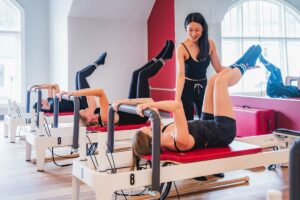 Hold onto the shoulder block for support and keep the heels together so that the opening between the two knees looks similar to the mouth of a clam. Then, repeat the motion of opening and closing the knees.
Hold onto the shoulder block for support and keep the heels together so that the opening between the two knees looks similar to the mouth of a clam. Then, repeat the motion of opening and closing the knees.
Keeping the heels together targets one of the most difficult areas to support: the outside of the glute muscles. These are responsible for strength in the lower back and pulling the hips into the proper alignment during the day.
Learn Some Basic Pilates Movements in a Beginner Class!
Even if you have never seen a reformer, getting started with Pilates is simple! The instructors at RTR Pilates always love to welcome new faces to beginner classes, where you can pick up on some of the most basic movements that make up the foundation of Pilates. From there, your repertoire will only continue to expand! Contact RTR Pilates today to sign up for a class.

